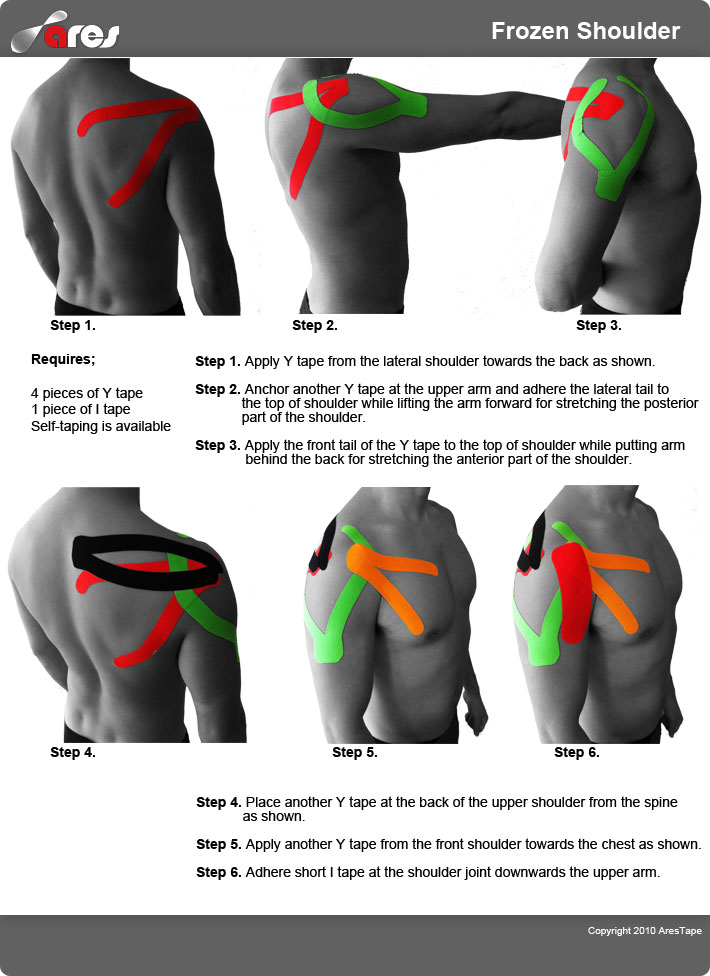Taping
Clinical Taping

Frozen Shoulder
The causes of frozen shoulder are not fully understood. The process involves thickening and contracture of the capsule surrounding the shoulder joint.
Frozen shoulder occurs much more commonly in individuals with diabetes, affecting 10 percent to 20 percent of these individuals. Other medical problems associated with increased risk of frozen shoulder include: hypothyroidism, hyperthyroidism, Parkinson's disease, and cardiac disease or surgery.
Frozen shoulder can develop after a shoulder is immobilized for a period of time. Attempts to prevent frozen shoulder include early motion of the shoulder after it has been injured.
Symptoms
- Pain due to frozen shoulder is usually dull or aching. It can be worsened with attempted motion. The pain is usually located over the outer shoulder area and sometimes the upper arm.
- The hallmark of the disorder is restricted motion or stiffness in the shoulder. The affected individual cannot move the shoulder normally. Motion is also limited when someone else attempts to move the shoulder for the patient.
Treatment
Frozen shoulder will generally get better on its own. However, this takes some time, occasionally up to two to three years. Treatment is aimed at pain control and restoring motion.
Main Functions of Ares Kinesiology Tape
- May relieve pain and muscle fatigue
- May improve
circulation and lymphatic flow via superficial activation while reducing
inflammation
- May correct muscle function through reduction of muscle tension and strengthening of the weakened muscle
- May correct misalignment of joints
- May work with the body to allow and increase normal range of motion
- May normalize length/tension ratios to create optimal force
- May assist and improve tissue recovery
- May decrease inflammation and pressure on mechanical recept
